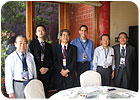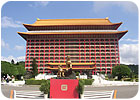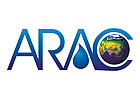Reflections on the 3rd ARAC Conference.


This past October, I had the honor of representing the Adhesive and Sealant Council (ASC) while speaking at the 3rd Asian Regional Adhesive Council (ARAC) Conference in Taipei, Taiwan, at the beautiful Grand Hotel. ARAC is a federation of four Southeast Asian adhesive associations: China National Adhesives Industry Association (CNAIA), Japan Adhesive Industry Association (JAIA), Korea Surfactant & Adhesive Industry Cooperative (KSAIC), and Taiwan Synthetic Resins & Adhesive Industrial Association (TSRAIA). Future plans call for a regional meeting every four years, with the next conference scheduled for fall 2010 in Seoul, South Korea.
Originally build in 1952, the Grand Hotel is a well-known tourist and business hotel. After playing host to international dignitaries and leaders, the hotel suffered a disastrous fire in 1995 but was rebuilt and reopened for business in 1998. The architecture features a traditional Chinese palace style design - vermilion pillars, majestic archways and the world’s largest tiled roof. The property sits atop a hill overlooking downtown Taipei, and from a distance one can make out the distinctive and modern Taipei 101 building, currently the world’s tallest skyscraper (and site of one of our networking dinners).

ARAC Executive Committee Meeting
Prior to the start of the conference, I was invited to participate in the ARAC Executive Committee (EC) meeting. The EC is comprised of the volunteer heads (presidents) of each of the four associations, association heads (secretary generals) and others. It is my understanding that the EC has not maintained a fixed meeting schedule, but has met at least once a year since its formation in 2001.
During our meeting, the following issues were addressed.
- Appointment of new ARAC Chair/Secretariat. Mr. S.C. Chen, TSRAIA President, will assume the position with a four-year term running Oct. 2006 through 2010.
- Adoption of official ARAC logo.
- Interest in exchanging information on regional government regulations was expressed, as was interest in harmonizing industry statistics collected across associations. New task forces will be formed to address each in the coming months.
- Concern about counterfeit adhesive material was also discussed. It was decided that ARAC will confront reputed counterfeiters and bring them to appropriate national government(s).
- Korea will host the 4th ARAC Conference in 2010.
I was given an opportunity to address the ASC’s needs, and discussed an interest in strengthening the council’s relationship with ARAC and its individual member associations. This includes a greater exchange of governmental/regulatory information and standards for the benefit of all. In addition, I confirmed that ARAC will serve as an official co-organizer of the upcoming 2008 World Adhesive Conference and will support the event by providing speakers as part of an official delegation. (I also had the opportunity to speak independently with Mr. Gong of CNAIA and Mr. Yano of JAIA, and am pleased to report that each intends to send a “significant” delegation to Miami.)
ARAC Conference
The ARAC Conference hosted some 260 delegates from the four associations. Business and technical attendees representative of the leading Asian adhesive manufacturers, raw material, and equipment suppliers were in attendance. The meeting’s theme was “Glue the World Together,” and it featured a mix of industry overview and technical discussions. The program opened with a general plenary session featuring the presentation “Future Technology Development: A Global View,” by Dr. Johnsee Lee, president of Taiwan’s Industrial Technology Research Institute, as well as regional industry discussions from China, Taiwan, Japan, Korea, and the United States. (Copies of these discussions are available on the ASC’s International webpage, www.ascouncil.org/govt/intl_home.cfm.)
Following the plenary session, 30 technical papers were presented over the course of a day and a half. Presentations were given by representatives from all four associations and included discussions on the following issues: environmentally friendly raw materials; advances in pressure-sensitive adhesives; hot-melt reactives; VOC emission test methods and standardization in Japan; adhesives used in footwear, LCD, and electronics applications; and a particularly interesting paper on a reversible adhesive technology recently developed by Konishi. In addition, there were 23 suppliers who participated in a small expo, which ran the duration of the meeting.
The conference was technically conducted in English, although most of the speakers I heard spoke their native language. Headsets were available for those speaking Chinese, Japanese and Korean, but translations were limited to the material presented on PowerPoint presentations and not a literal translation of the presenters’ remarks. Q&A sessions were sporadically translated into English, depending on who was asking the question. Although it was a bit challenging to communicate freely with most attendees due to language issues, I did glean from several companies a sincere interest in partnering more with U.S. manufacturers, as well as learning more about U.S. regulations and how they compare with their own country’s.
Despite the linguistic challenges, I was warmly received by all and felt quite welcomed. ARAC went out of its way to make me feel at home; I was included at the head table at dinner functions and was offered ample opportunity to make formal welcome remarks. I feel ASC’s presence has done much for fostering closer relations with ARAC, and will be of particular benefit as the ASC plans to host the 2008 World Adhesive Conference.